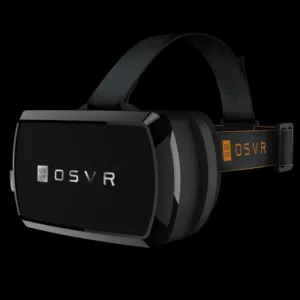HMD developer Sensics was at I/ITSEC to show off its high performance HMD but also to facilitate discussions about OSVR – their joint venture with game developer, Razor. OSVR stands for Open Source Virtual Reality and the idea is to create a platform of interfaces that are open source, i.e. non-proprietary or royalty-bearing, that allows developers to create VR solutions using a plug and play approach. (The Open Source Virtual Reality (OSVR) Effort Aims to Speed Adoption and Eye Tracking Added to OSVR)
According to Sensics CEO, Yuval Boger, the group has now grown to 250 companies including majors including nVidia, Intel, Jaunt and others. “Putting together complex VR solutions is tough,” noted Boger “so being able to reliably swap out an eye tracker from one company with another and not have to redo the whole interface is a big benefit. So far, we have standards for interfaces for eye tracking, motion platforms, displays, game engines, gestures, cameras and more, but no common voice interface yet.”
Sensics provides the optics for the OSVR HMD that is sold as a developer kit for $299. The display is a 5.5” FHD resolution OLED panel from AUO. In the headset demo, pixels are clearly visible and there was some smearing and tracking lag, which Boger attributed to the laptop driving the headset. “You need the best graphics cards and these are only available in a desktop machine, which I didn’t bring to I/ITSEC,” said Boger.
The OSVR effort is also generating additional business for the company to sell more advanced or custom HMDs and to help application developers in building solutions using the interfaces already established.
Boger suggested there will be some exciting news coming at CES 2016 and it is likely to involve the use of flexible OLED in an HMD. That will be interesting as you should be able to get at least one degree of curvature with the display and offer an immersive experience that might reduce the error correcting needed in high precision optics.

